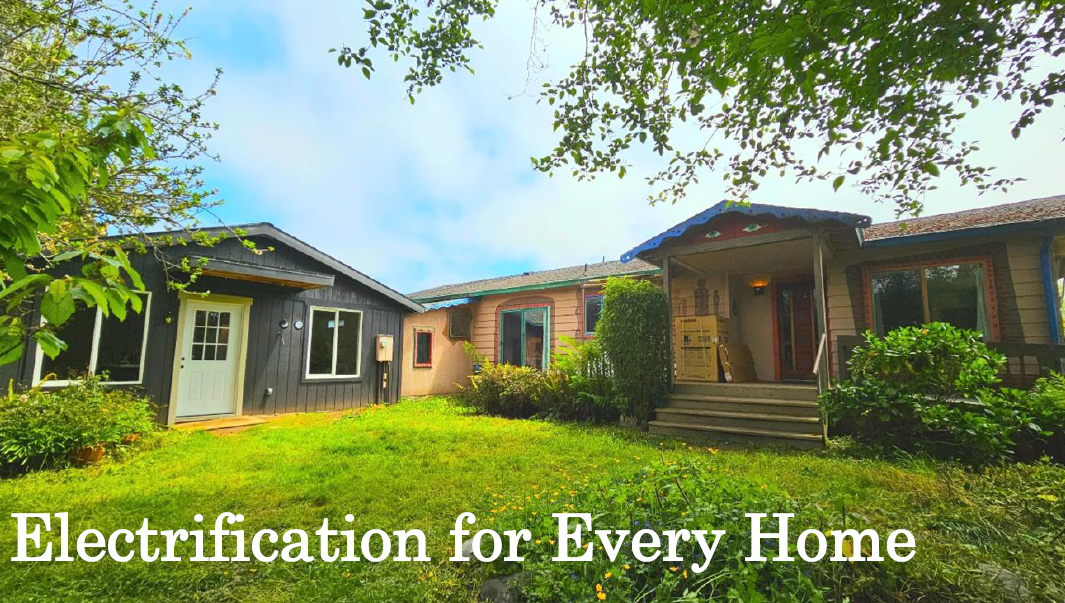This solution could unlock full electrification in millions of homes
Redwood Energy and NeoCharge recently demonstrated a "Watt Diet" electrification solution that avoids the need for expensive electrical upgrades in existing homes.

Quitting Carbon is a reader-supported publication. To support my work, please consider becoming a paid subscriber or making a one-time donation.
One of the biggest barriers to full electrification of existing homes has been that shifting to electric appliances such as heat pumps and induction stoves has often required the homeowner to pay thousands of dollars to install a new electric panel or upgrade the distribution service line to the home.
No longer, based on results from a recently completed demonstration project.
In September 2024, the U.S. Department of Energy (DOE) announced the winners of the Equitable and Affordable Solutions to Electrification (EAS-E) Prize. One of the runners-up from the finalist pool was a whole-home electrification solution demonstrated by Redwood Energy, an Arcata, California-based design firm, and NeoCharge, a home electrification and EV charging technology company based in San Luis Obispo, California. The project team was awarded a $325,000 cash prize.
“The prize calls for innovators to address residential building-electrification challenges head-on with new technologies and approaches,” the US Department of Energy (DOE) said in a press release.
Redwood Energy and NeoCharge did just that.
The partners’ solution used low-power appliances that plug in to standard 120-volt outlets combined with NeoCharge’s smart circuit-splitters to avoid costly electrical service upgrades at two homes operating on a single 100-amp electrical service in McKinleyville, California.
“This approach can save homeowners up to $3,575 versus panel upgrades while supporting grid reliability by eliminating unnecessary infrastructure modifications,” NeoCharge wrote recently at the company’s blog.
NeoCharge added that for DOE’s National Renewable Energy Laboratory (NREL), which verified the technology solution at its testing facilities, “this validates a scalable solution that could enable cost-effective electrification of tens of millions of U.S. households using their existing electrical panels – particularly benefitting low and moderate-income communities.”
According to DOE, the solution proves that “many homes in the U.S. can electrify with their existing electrical service without sacrificing the performance of any end use.”
The problem, the solution
In an interview, Sean Armstrong, a partner and managing principal with Redwood Energy, told me that inspiration for the project came from his firm’s experience working to design solutions to retrofit apartments to all-electric service.
That task is made more challenging by the fact that apartments are not required to have even 100-amp electrical service. And some apartments even have 50- or 60-amp service, he said.
If your electrification plan calls for separate 240V outlets for the stove, water heater, heat pump, and other large electric appliances, then existing homes will likely require significant and costly upgrades.
The estimated average cost of a panel upgrade is $4,000 in California and $3,000 nationwide, according to research by Redwood Energy and NeoCharge. The companies say the technology they used to manage electrical loads in the McKinleyville homes and to avoid a panel upgrade, NeoCharge’s Energy Management System (EMS), can be installed for just $150 to $450.
“When the EAS-E contest came out, the idea was to try to combine all the different things that we devised as strategies in the most extreme situation that we could think of, which was a 120V house, which had never been done, to my knowledge,” said Armstrong.
“If you have an all-electric home, you have a 240V kitchen circuit for your stove. Up until very recently, you've had to do the same thing for your water heater, and you've had to do the same thing for your HVAC and for your laundry dryer – everything, essentially, that was a big electric load was done in 240 voltages,” he said.
The project site in McKinleyville comprises a 1,440-sqaure-foot double-wide manufactured home built in 1973 and a new 600-square-foot accessory dwelling unit (ADU) – with both homes operating on a single 100-amp service panel.
In the ADU, only high-efficiency 120V appliances, including a new-to-market 120V plug-in solar photovoltaic array, were installed. In the existing manufactured home, 120V appliances were used alongside an existing shared dedicated 240V circuit that was optimized with NeoCharge’s Smart Splitter to balance the loads from a 240V induction stove and 240V heat pump.
“The whole solution is capped off with NeoCharge’s whole house API [application programming interface] controls that can monitor and manage the smart appliance’s energy use to reduce bills and emissions while always keeping the panel at a safe capacity,” the project team wrote in a report submitted to DOE.
Real-world results
Redwood Energy and NeoCharge validated the performance of their package of solutions, operating under the control of NeoCharge’s EMS, in NREL’s Systems Performance Laboratory. Tests were conducted under both baseline (involving standard 240V electric appliances) and experimental (involving the suite of proposed 120V solutions) configurations and under scenarios to account for different climate zones (marine: San Francisco; cold: Cleveland), seasonal variations (mild and extreme weather conditions), and occupancy and behavioral patterns.
“The real knowledge gained from the NREL testing comes from doing a side-by-side comparison where we're looking at this existing solution versus our proposed solution,” Redwood Energy research associate Cobe Phillips told me.
“We are reducing the overall impact on the [electrical] panel by roughly 60% to 70%. The total amount of the peak amperage is about 70% of what we would see from a standard solution. That 30% difference is still pretty significant,” she added. “It allows for us to do these retrofits on 50-amp panels easily.”
“Going from the 45-amp range down to even just 40 amps allows us to access a 50-amp panel with this full solution without ever triggering any breakers or any safety devices. That was really important for us to see that the solution, even in cold temperatures, will manage.”
Using such a “Watt Diet” approach, most existing homes and apartments in the U.S. could fully electrify without expensive upgrades.
“Almost all U.S. houses have a 100A service or larger, more than enough capacity to go all-electric with a Watt Diet approach. Apartments usually have a 60A to 80A service, making a Watt Diet approach even more helpful for electrification,” the project team wrote in the report submitted to DOE.
Redwood Energy and NeoCharge’s package of 120V solutions is proving its value in the real world, too, according to the occupants of the two homes in McKinleyville.
“The owner of both homes has been living in the ADU with his partner, and the two of them have not yet seen any complications that have come up from utilizing 120V devices, and the circuit-splitter technology, while important, has not needed to engage in a noticeable way,” said Phillips.
“I'm happy to report that they're living comfortably so far.”
A poster child project
Redwood Energy and NeoCharge are using lessons learned from the EAS-E Prize demonstration project to inform policymaking.
Redwood Energy staff use the project as a poster child when they speak at conferences, Phillips told me.
She added that Redwood Energy has also communicated with officials at the California Energy Commission, which develops and approves state energy standards for buildings, who are looking to change how policy is made regarding circuit limitations and circuit-sharing solutions. The project partners have also engaged with the publishers of the National Electric Code to ensure that NeoCharge's EMS aligns with code requirements.
“Finding new ways to implement either part of this solution or the totality of it is something that Redwood Energy will continue to push forward – finding niche housing situations with these small panel sizes and coming up with solutions that employ circuit-sharing 120V devices and making it work even in the hardest cases,” said Phillips.




